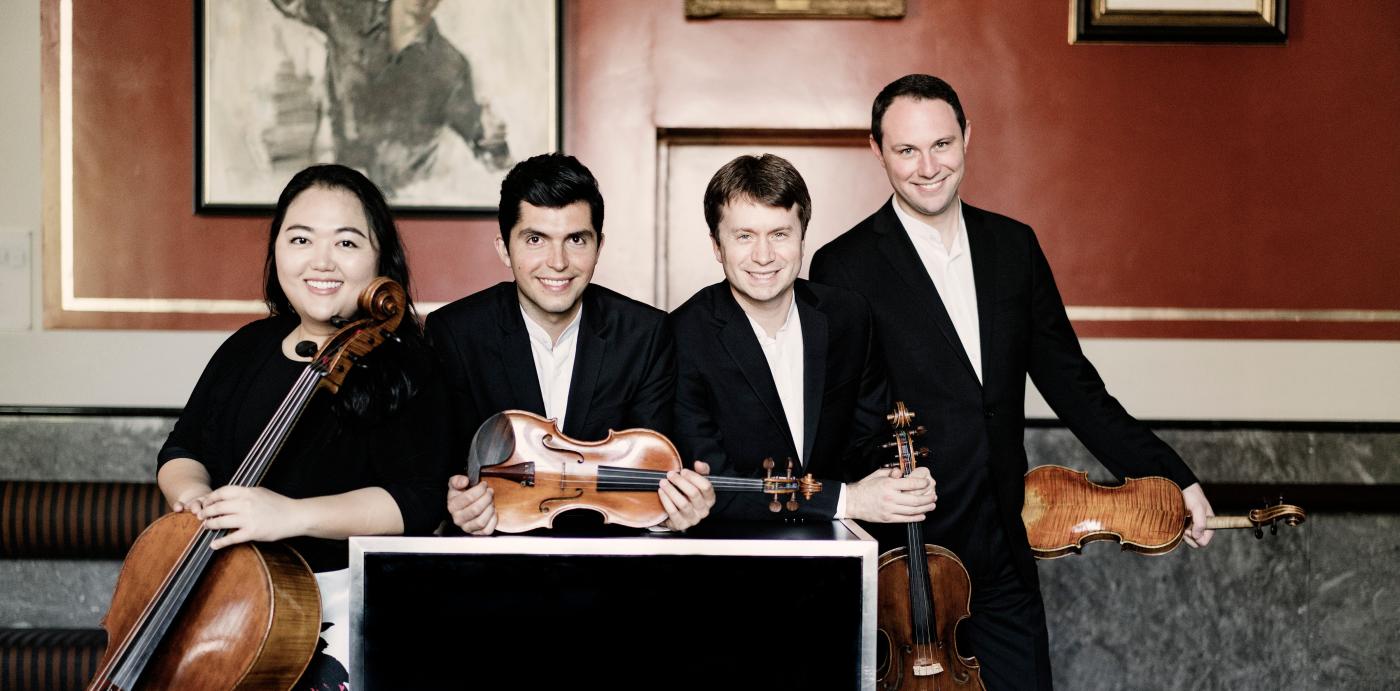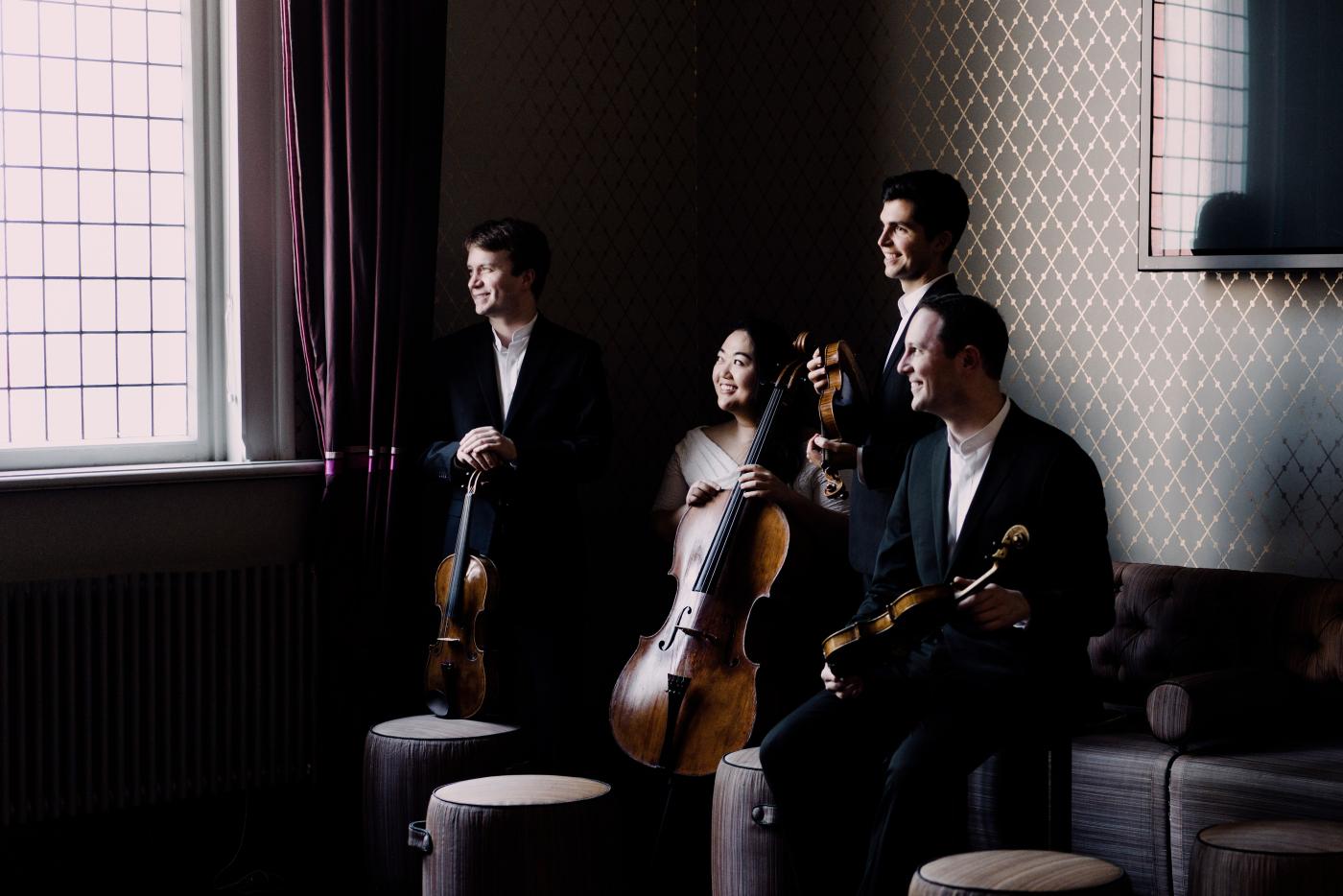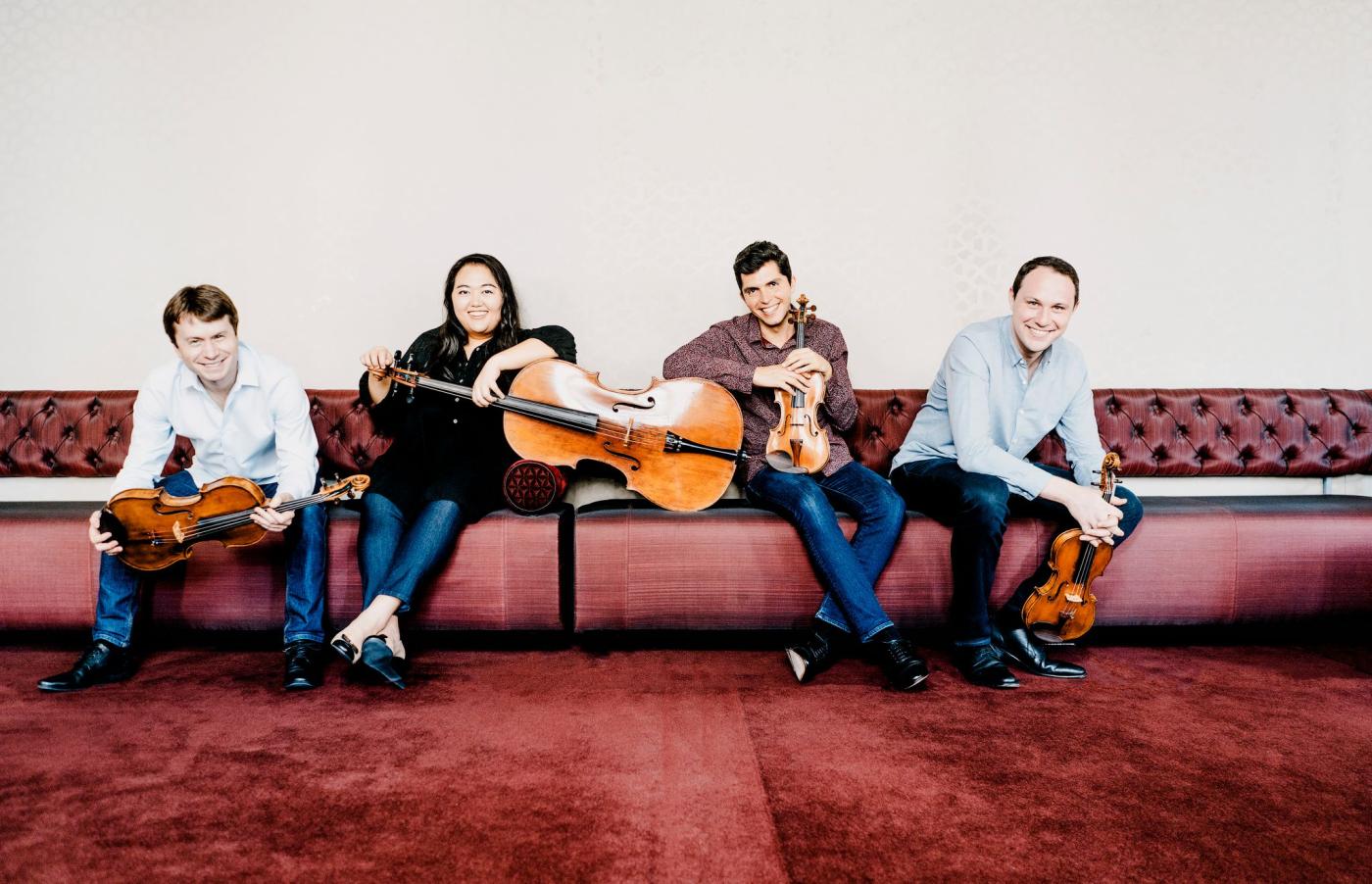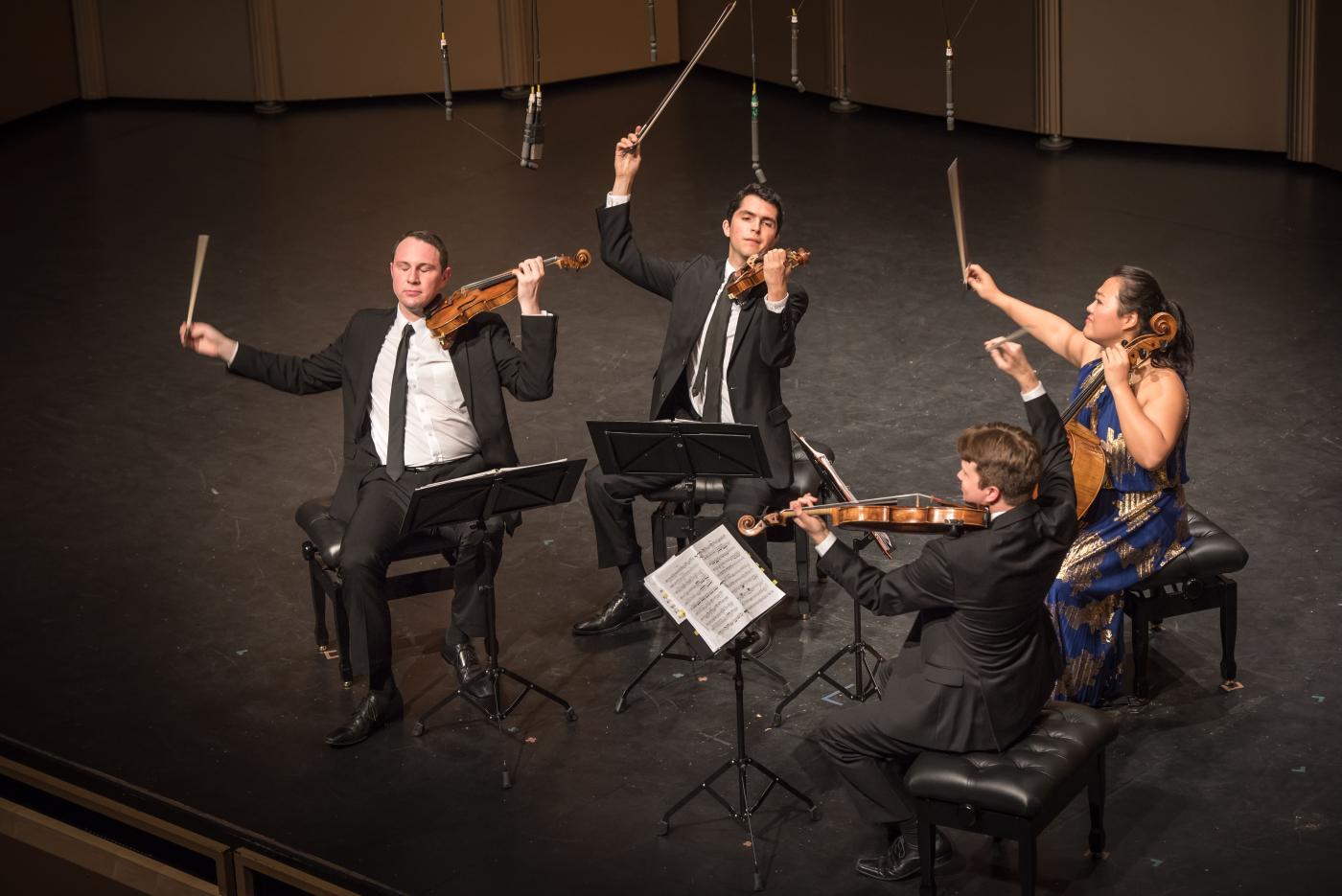The Calidore String Quartet just released a new album of the late string quartets of Ludwig van Beethoven, works that for many listeners represent the peak of chamber music and even of all art. I recently asked them about this project in an e-mail interview.
James Jacobs: I’m very excited about your new album of Beethoven’s late quartets. To have a group of young musicians - who have clearly shown their commitment to new music, diverse voices and exploring innovative ways of reaching out to audiences beyond the traditional concert and recording formats - release a 3-CD set of the works of a single iconic composer feels like both an affirmation of the continued relevance of such completist projects and also a statement that Beethoven, and these works in particular, need to continue to be part of our cultural conversation.
The great fantasy writer Ursula LeGuin once said: “He [Beethoven] moves so strangely and quite suddenly sometimes from place to place in his music, in the late quartets. He knows where he’s going and he just doesn’t want to waste all that time getting there. But if you listen, if you’re with it, he takes you with him. I think sometimes about old painters—they get so simple in their means. Just so plain and simple. Because they know they haven’t got time. One is aware of this as one gets older. You can’t waste time." One example of Beethoven’s ignoring transitional niceties occurs in the A minor quartet, where the third movement – seventeen of the most sublime minutes of music ever written that Beethoven called Heiliger Dankesang ("A Holy Song of Thanksgiving"), which he wrote as a prayer of gratitude after recovering from a serious illness – is followed rather abruptly by a kind of clumsy march, then a dramatic recitative reminiscent of the beginning of the last movement of the Ninth Symphony, followed at last by a finale, a melancholy minor-key waltz of almost Schubertian longing that eventually ends, after some drama, in the major. There is of course no one answer as to how this music “goes”, and these apparent non sequiturs can be interpreted in so many ways. As an ensemble, how do you decide to interpret a journey such as this?
Calidore: In the third movement, the Heiliger Dankesang, we frequently contemplated the state of Beethoven’s health while writing it. His life was plagued by frequent illness, but at this time, he felt as if he may never recover. This movement with its “neue kraft fühlend” or “with renewed strength” represents the first inklings of hope that he may be able to survive. In these more moving sections of the third movement we seek to imbue optimism but still choose a held tempo so as to not deviate too far from the hymn sections that surround it. In this way, the listener can feel Beethoven gaining a bit of strength, but not a full recovery. These passages are about an uplifted feeling amidst hardship.
As we transition to the fourth movement, the march, we put the most significant pause between movements of the entire piece. It is interesting to think of the op. 131 which precedes this work and its seven movements of various characters that all are to be played attacca one into the next. Thus, in the Op. 132, the pauses between movements (only possible in live performance), have to be carefully considered, especially since, as you point out, they are so widely varying in character and atmosphere.
The connection between the recitative and the last movement has a more natural flow, as the recitative seems to pose a question in the ends of the solo violin’s line which is answered by the ushering in of the underpinning rhythm of the finale. Tone color and timber is always fundamental to our approach in highlighting Beethoven’s abrupt harmonic and character shifts. In this way we fully embrace the strangeness of these changes. These characteristics are fundamental to the pioneering vision of his late works.
JJ: Your concert programs and your previous albums are frequently thematic, finding connections among composers of disparate backgrounds and eras. Your previous two albums for the Signum label, Resilience and Babel, touched on such themes as global conflict and the struggle to communicate across cultural borders. The program you recently played at the Kennedy Center's Fortas Chamber Music Series combined Beethoven's final quartet with a new work written for you by Anna Clyne, a piece by the 20th century African American composer George Walker, and the second quartet of Leoš Janáček, four pieces that share elements of autobiography, existential questioning, and the transformation of the verbal into the musical. These are some complex ideas atypical of chamber music programs - do you discuss them during rehearsals?
Calidore: We spend our rehearsals completely immersed in the music. Historical perspective does play a big role, but that is brought to the rehearsal through our own individual research. Finding common threads that unite the works we play, regardless of the era they are written, highlights one of the most important reasons for the enduring power of classical music. Namely that all of the composers of the canon sought to express the same emotions that are fundamental to our human experience even today. Our job as performers and curators is to bring these qualities in the music to an audience in an engaging and thoughtful way so they come away feeling more connected to themselves and humanity.
Jacobs: How does concertizing feel post-pandemic? Does it feel “back to normal”? How has the experience of the last few years affected your ambitions for the group going forward?
Calidore: The pandemic reaffirmed our commitment to live performance by emphasizing that is an exchange of energy that is essential for music making. Furthermore, we continue to hold a profound sense of gratitude to inhabit the sacred space of performance with a live audience. You never know how truly special something is until you feel it is lost. The perspective that the pandemic provided is something that has reinvigorated our purpose as classical musicians in the 21st century. It gave us the time and space to continue to broaden our repertoire and draw stronger connections between lesser known, yet remarkable works with the pinnacles of the vast, diverse and rich repertory or the string quartet.
Enjoy Calidore's new album here!
PBS PASSPORT
Stream tens of thousands of hours of your PBS and local favorites with WETA+ and PBS Passport whenever and wherever you want. Catch up on a single episode or binge-watch full seasons before they air on TV.



